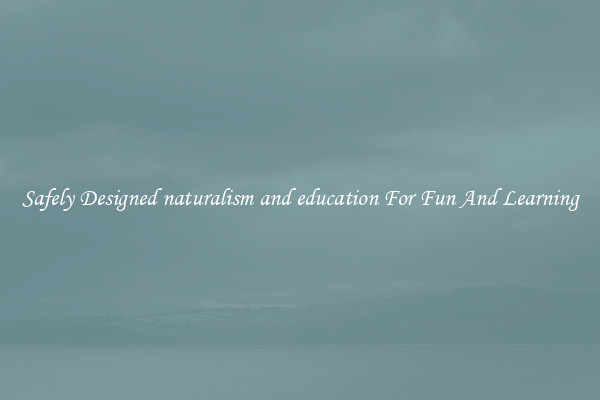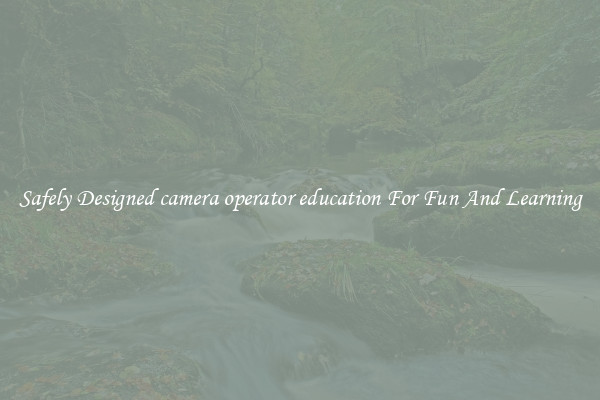Safely Designed naturalism and education For Fun And Learning
Safely Designed Naturalism and Education: Fun and Learning Hand in Hand

Learning doesn't have to be confined within the four walls of a classroom. Imagine the joy children experience climbing trees, digging in the soil, or exploring the wonders of nature. This is the essence of safely designed naturalism, a concept that promotes fun-filled education through hands-on experiences in a safe and controlled environment.
Safely designed naturalism refers to the integration of natural elements, such as plants, trees, and water, into educational settings. It aims to provide a holistic learning experience that nurtures children's physical, cognitive, and emotional development. By creating a safe and accessible space for children to engage with nature, it promotes curiosity, wonder, and a sense of exploration.
One of the key benefits of safely designed naturalism is the opportunity it provides for children to cultivate their imagination and creativity. Natural elements stimulate their senses, whether it's the feel of soil or the sound of leaves rustling in the wind. This immersive experience fosters imaginative play, where children can create their own narratives and scenarios, enhancing their storytelling skills and imaginative thinking.
Moreover, safely designed naturalism allows children to gain a deeper understanding of the world around them. It provides hands-on learning opportunities that textbooks cannot replicate. Through observation and exploration, children can learn about the lifecycle of plants, the behavior of animals, and the delicate balance of ecosystems. This experiential learning approach encourages critical thinking and problem-solving skills as children investigate, make predictions, and draw conclusions based on their observations.
Additionally, safely designed naturalism contributes to the physical well-being of children. Outdoor activities involving physical exercise are known to enhance motor skills, coordination, and gross motor development. Climbing, running, and balancing on natural surfaces improve children's strength, agility, and overall fitness. This holistic approach to education helps combat sedentary lifestyles, promotes healthy habits, and fosters a connection with nature.
Creating a safely designed naturalistic environment also instills a sense of responsibility and stewardship towards the natural world. By immersing children in nature from an early age, they develop an appreciation for the environment and learn the importance of preserving it. This can lead to a lifelong commitment to sustainability and environmental conservation.
However, it is crucial to emphasize that safely designed naturalism should prioritize both safety and education. Adequate risk assessments and supervision are essential to ensure children's well-being. Creating safe play areas, conducting regular safety inspections, and having qualified staff trained in outdoor education are crucial elements to consider.
In conclusion, safely designed naturalism offers a unique and effective approach to education that combines fun, exploration, and learning. By integrating nature into educational settings, children's imagination, cognitive abilities, physical health, and environmental consciousness are nurtured. This hands-on approach to education fosters a sense of wonder, curiosity, and resilience, preparing children to become lifelong learners. So let's embrace safely designed naturalism and provide our children with the opportunity to experience the joy and learning that nature has to offer.

View details

View details

View details

View details








